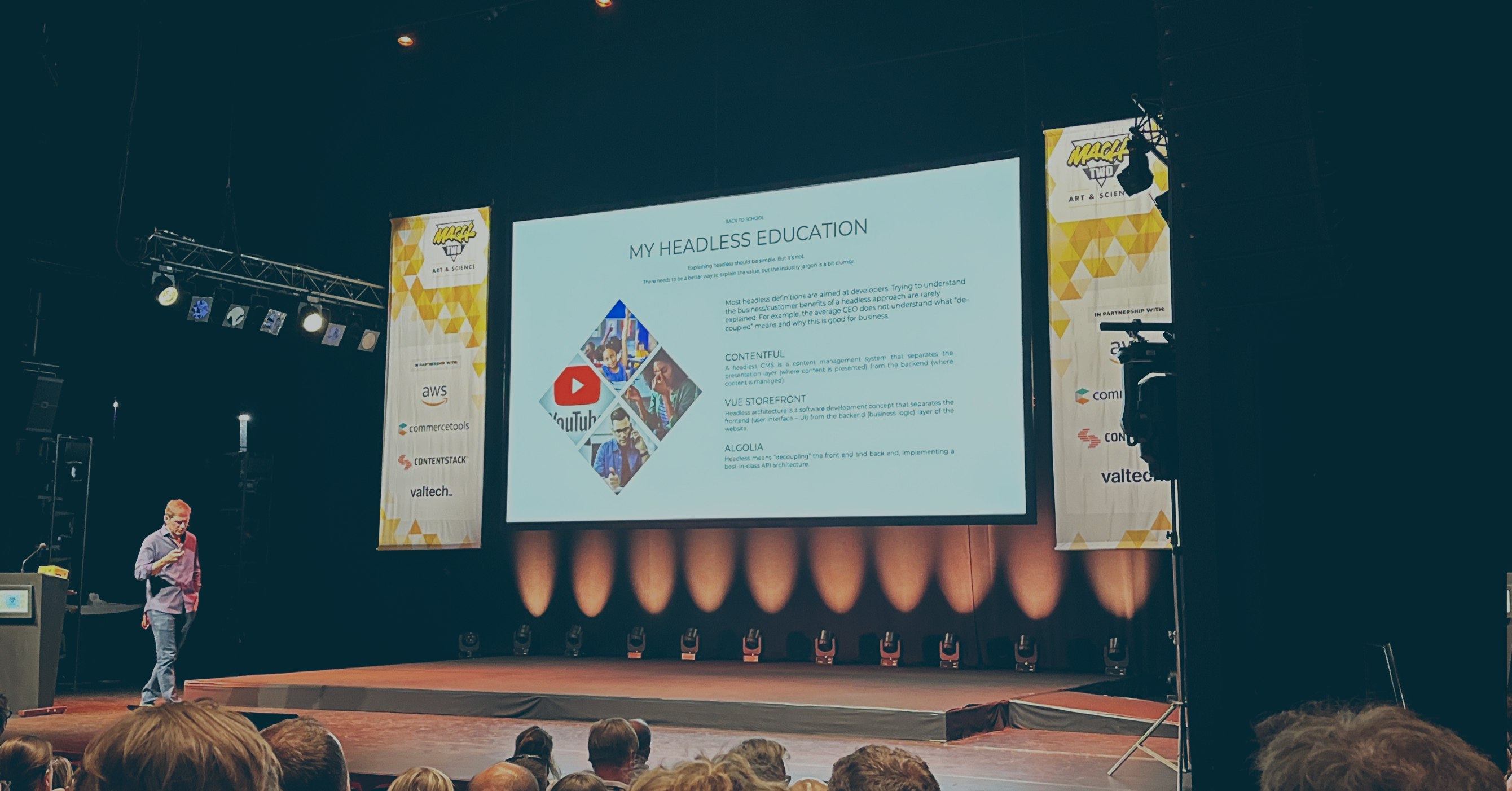Content meets MACH and MACH needs content
Author
Arjoen Kikkert
Published
26 June 2023
Reading time
6 minutes
About how content architecture helps unlock the full potential of your headless content management systems.
Recently, my colleagues Vanessa, Henk and I participated in the MACH 2 event. For those unfamiliar with MACH, it is a vision of system architecture that stands for:
- Microservices: These are separate pieces of business functionality that are developed, deployed, and managed independently.
- API-first: All functionality is made available via an API, making it possible to link two or more applications or services together.
- Cloud-Native SaaS: This refers to Software-as-a-Service that leverages the full capabilities of the cloud, including scalability and the ability to make the most of available resources. This eliminates the need to manage upgrades.
- Headless: In this approach, the front-end user experience is completely disconnected from the logic and content, giving more freedom in designing the user interface and connecting to other channels and devices.
As content system designers, we are particularly interested in this event, because decoupling content from presentation (the 'H' in MACH) affects the way we design content in these systems.
Art & Science
The theme of the MACH event was 'Art and Science', calling for the business side, or "Art", to be more involved in MACH's technological framework. Most of the presentations during the event were therefore on this topic. Fortunately, there were also some speakers who highlighted the impact of headless on your current content structure and organization.
Nicolas Pastorino of Interflora was one of those speakers. He emphasized that MACH is not only a technology vision, but also a mindset that must permeate the entire organization. He was talking about technology in this comment, but this way of thinking also applies to the design of content. Without this mindset, we often make decisions that result in a content system that is not scalable to other channels. It is essential to have roles within the organization that can master and propagate this way of thinking.
One user experience, one language
During a panel discussion, Jen Jones of the MACH Alliance concluded that the development and implementation process of a MACH architecture is complex. This is partly because the different disciplines involved in a MACH transformation use their own frameworks. She therefore indicated that more attention should be paid to uniting these frameworks. This is something I recognize in my daily work with the design disciplines UX, Content, Front-end and IT, each of them using their own language when developing the same user experience. Perhaps data scientists who are becoming increasingly involved in our field can play a role in uniting our vocabularies in a common language. For example, by means of a shared design system.
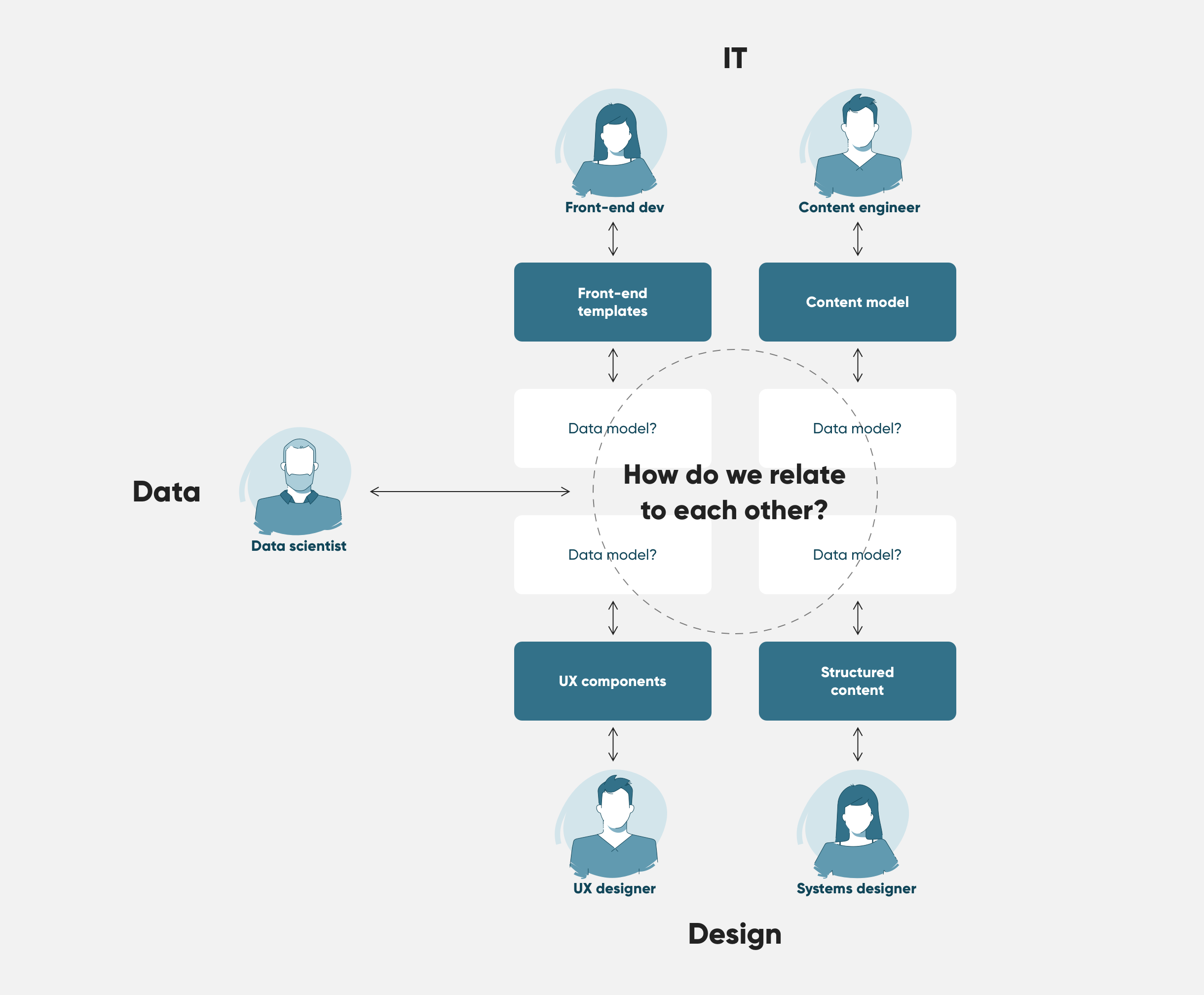
Create Once Publish Omnichannel
UNUM's D'Arcy Heath stressed the importance of reusability and structured content in a highly regulated environment. One way to do this is to use a COPE strategy. COPE stands for "Create Once Publish Everywhere" and has long been a buzzword in CMS land. However, I've never seen it working. This is also because after COPE became a thing, the market has long been dominated by monolithic content management systems. With the headless transformation that MACH advocates, COPE could possibly be within reach again.
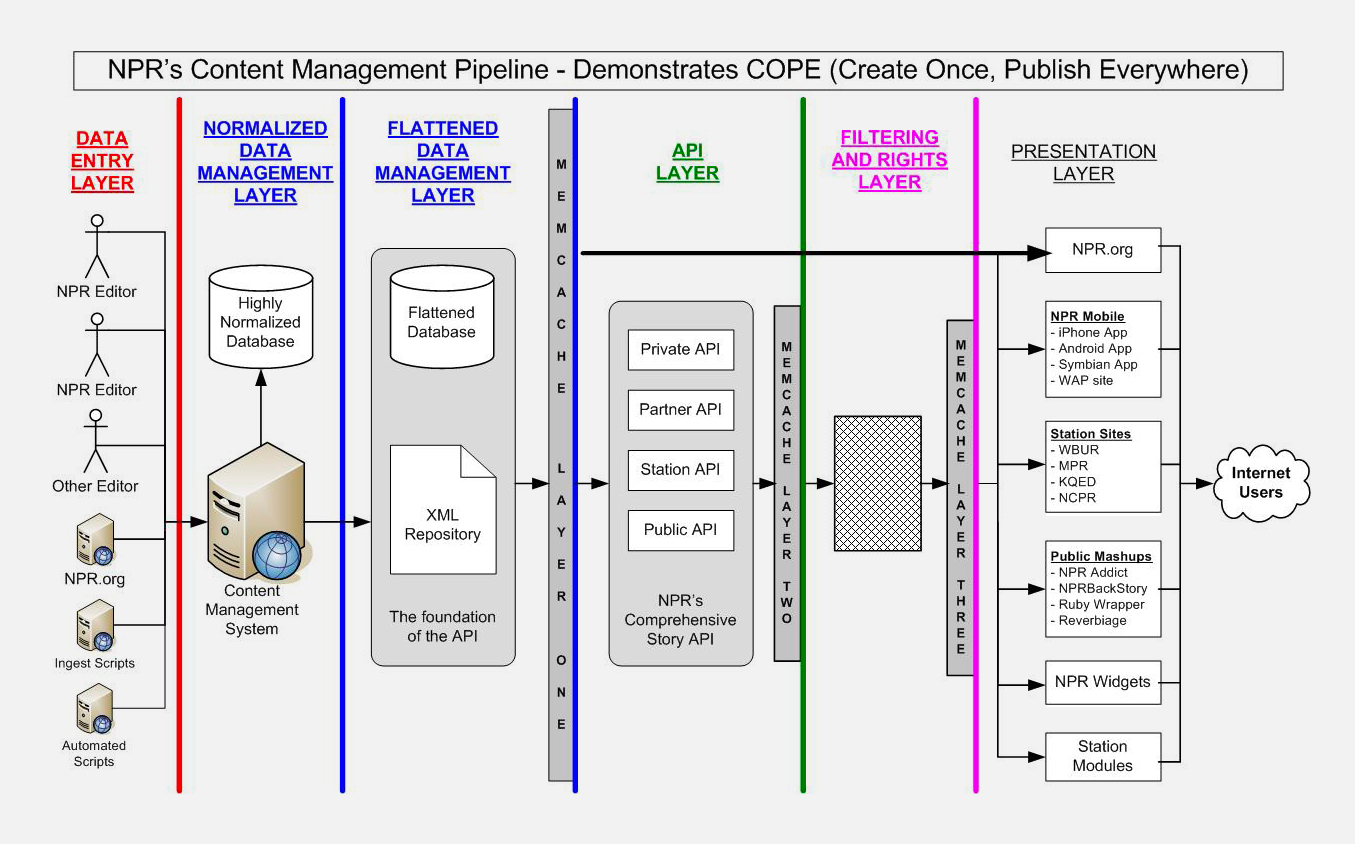
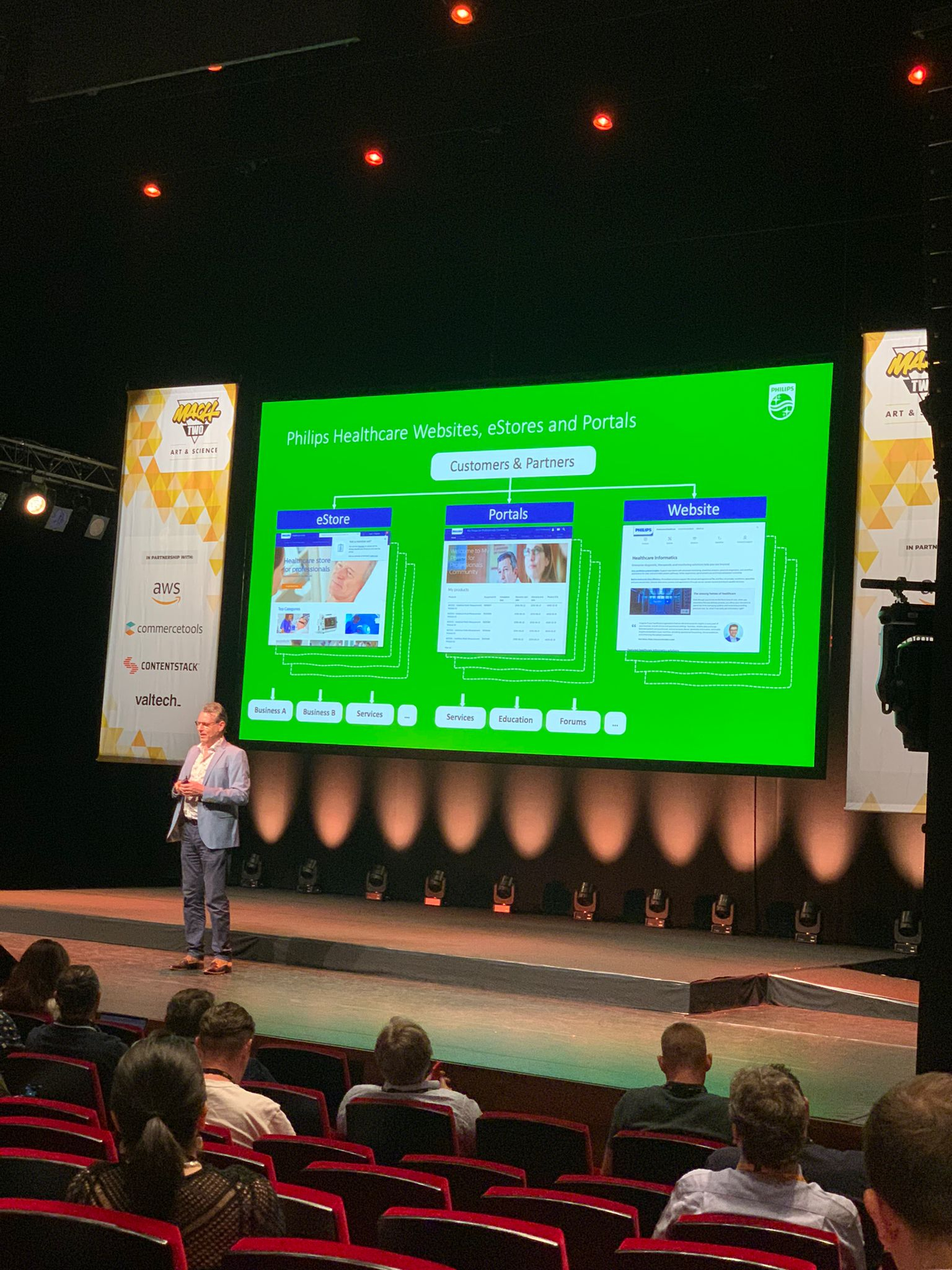
Reusable content structures
During the presentation by Hans Notenboom of Philips, we immediately recognized the situation we experience every day. Hans described the problem of "embedded" content, where the content is strongly intertwined with the page itself. He highlighted the challenges of decoupling this content from the design, so that a consistent structure, style and content can be created. The presentation didn't give a concrete answer to how this can be achieved, so I asked him during the break how Philips designs its content models so that they are scalable across all channels. From Hans' answer I understood that at the moment the focus is more on the fact that the design takes place, than on the specific method of it. As long as the content model works for the current channels within the set scope, the design of the content architecture seems to be less important. However, what if a new channel emerges that wants to use the same content? Will the content model still function properly? It is paradoxical that a content architecture within a "headless" multi-channel CMS is in fact not really "headless" if the content is not reusable in new channels without causing significant impact on the content model. In my opinion, this is the core of the added value of content architecture. It is essential that the architecture is scalable, even when the content suddenly needs to be used in other contexts and channels within other brands or even other companies. Hans rightly noted that the lack of standards for content architecture is strange, especially since within their field, the concern, one would expect there to be standards for the information objects they use.
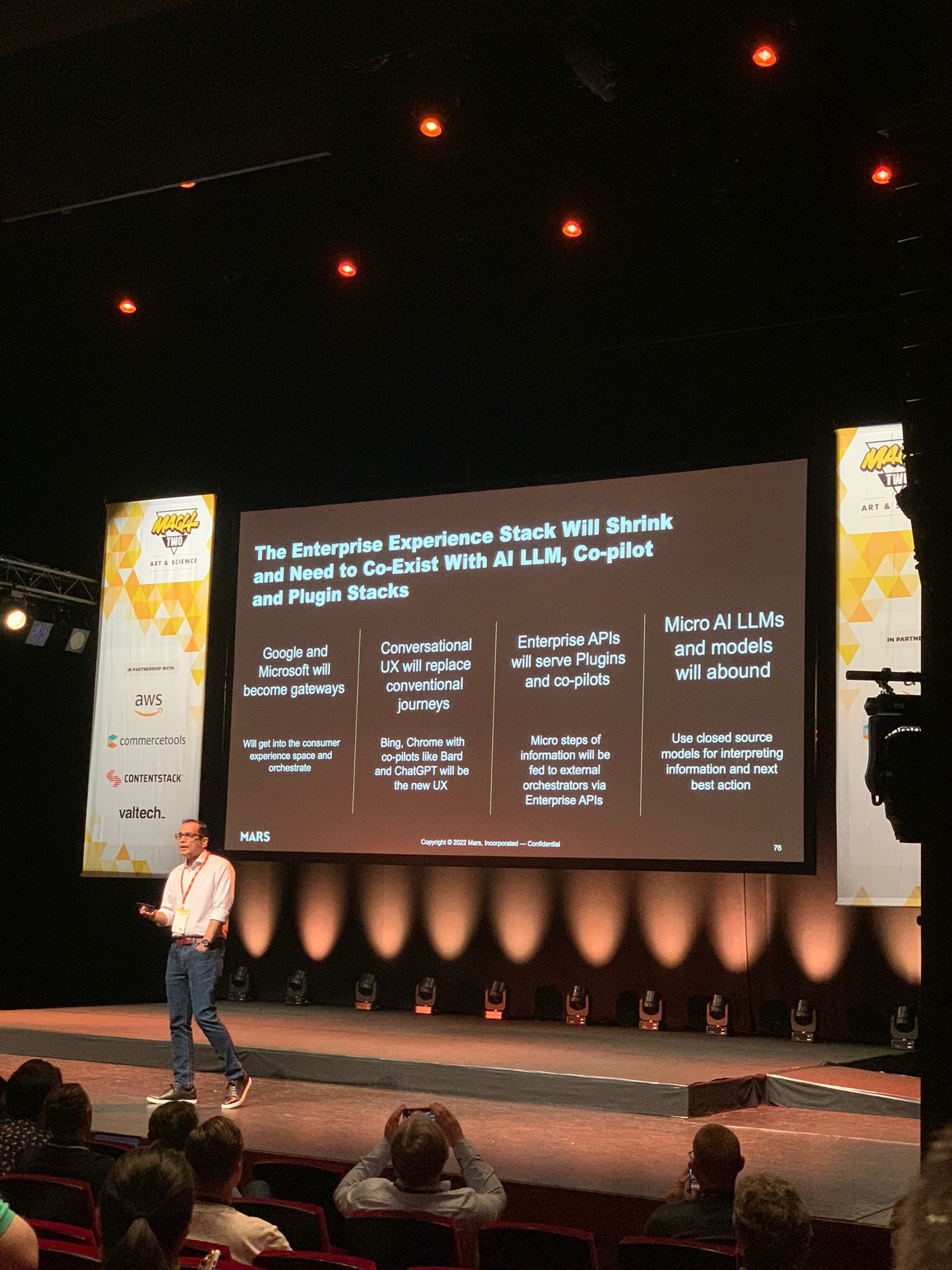
Conversational Journeys
Balakrishnan Subramanian from Mars presented how Mars has migrated their traditional, monolithic systems to a flexible, modular MACH architecture. With their diverse range, ranging from food to pet care items, it is crucial for Mars to be able to respond quickly and efficiently to market changes. Later in his presentation, Balakrishnan mentioned two:
- Google and Microsoft will increasingly act as gateways to products and services within the corporate domain. This point made me wonder if the scope of "omnichannel" will shift from all the channels you own as a company, to all the channels you own and the channels you don't own, but where people do experience your content. Think of Google for Jobs and other rich search widgets.
- Traditional customer journeys will make way for conversation-driven user experiences, in which generative AI assistants play an important role. This prediction, which is also regularly made by my colleague Henk Westerhof, contrasts with the focus we see every day on designing and developing page-based content experiences or apps.
Summarizing
After attending this event, we see the value of MACH. We realize that MACH principles are complementary to our field. We also notice that there is still insufficient attention for standardized methods to develop a content architecture within a headless CMS. From the stories at the event, an image emerges as if the content model has to be reinvented with every implementation of a headless CMS. While a product is a product, regardless of whether it concerns dog food or flowers. They largely share the same properties. This also applies to other types of content, such as questions, answers, guides, services, web pages, videos, articles, blogs, and images.
Conclusion: MACH needs content standards
For many types of content, there must be a standard architecture framework that we can apply to every implementation of a headless CMS. Such a framework leads to more efficiency and higher quality in terms of scalability, interoperability, accessibility, maintainability, etc. Only with such a framework will we be able to utilize the full potential of headless content management systems and thus realize the MACH vision.
"Buying a headless CMS without an information architecture is like buying a racecar without an engine and pushing each other around."
Patrick Bosek
About the author

Content architecture
Omnichannel
Headless
Content strategy
